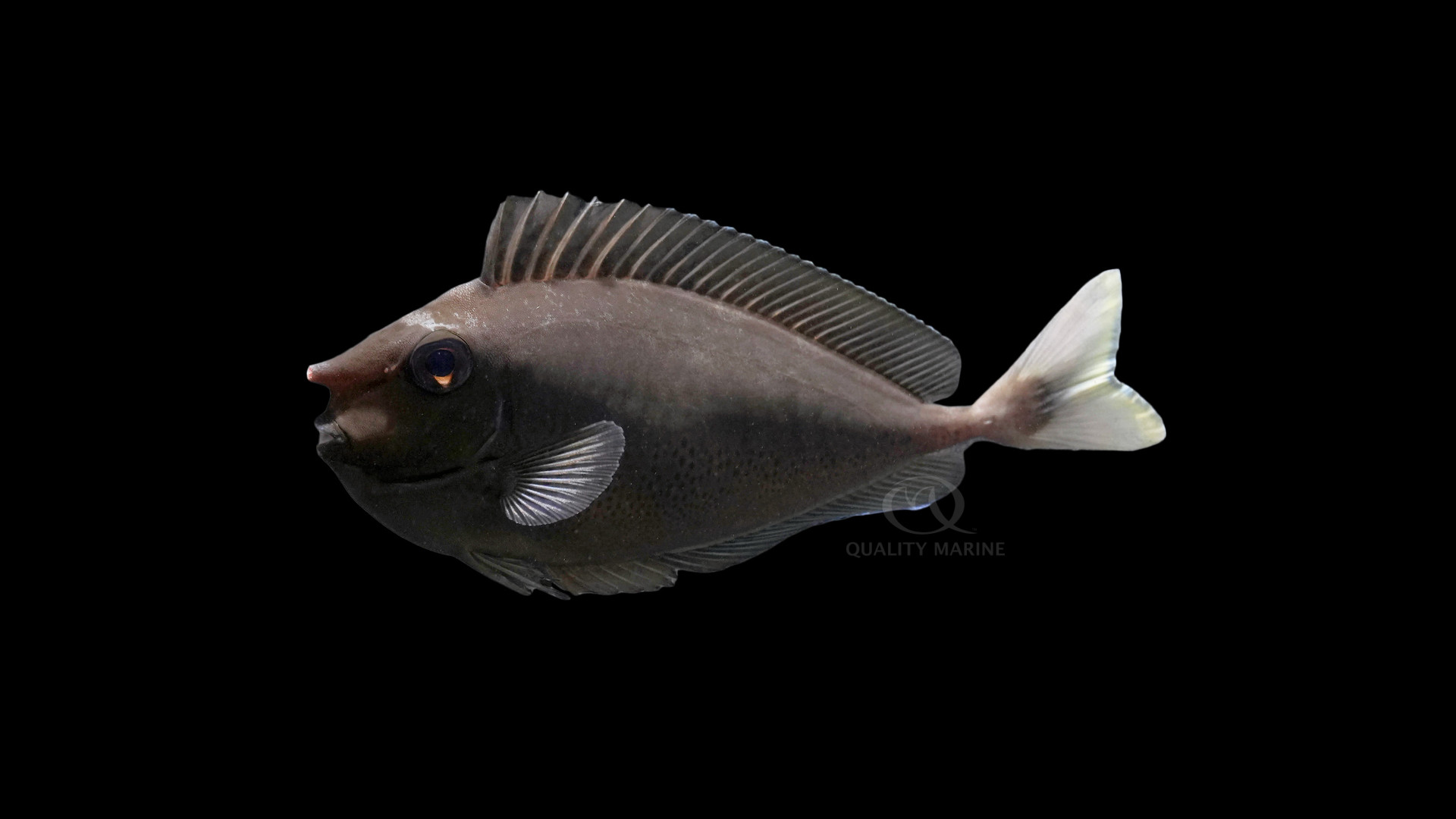The Legendary Unicorn

Naso unicornis is a popular food fish throughout much of the world, even though there are reports of ciguatera poisoning from eating it. Ciguatera is caused by eating fish that contain the toxins from a specific microalgae (Gambierdiscus toxicus). It can cause nausea and vomiting, and, in some people, it can cause tingling in extremities and other neurologic anomalies; among the odder ones is a symptom where patients experience hot as cold, and cold as hot. Regardless, Naso unicornis is not considered one of the fish likely to give someone ciguatera and is regularly eaten around the world. As a result, it has a spectacular number of common names, over 200 of them in almost 60 different languages! In English, it is most often referred to as the Unicorn Tang. This is confusing in its own right as there are at least six species of fish with that common name. To limit some of that confusion, N. unicornis is also frequently (and accurately) called the Bluespine Unicorn Tang, or a very similar variation like Bluespined Unicorn Fish, etc. Other less common, and less accurate, English common names include, Brown Unicorn, Spotted Unicorn, and Long Snouted Unicorn.
Throughout history, this fish and its similar brethren dubbed Unicorn have been an important fish for the human uses from a massive range of locations. It has been used for food, the bones have been used for hooks and jewelry and even the skin of it was tanned as used for leather. Native peoples from the Central Pacific to the African Coast, spanning two oceans in both tropical and subtropical locations have been utilizing all of this fish for generations. It can be found as far north as the northern reaches of Honshu (the big central island in Japan) and south almost to New Zealand!
They are usually found in small groups, being active during the day near coral or rock reefs, in predominantly shallow water, where enough sunlight penetrates to grow the algae they like to eat. While this algae makes up the bulk of their “intentional” diet, stomach assays have shown that their diet also contains a large percentage of bycatch, in the form of small invertebrates that were living on or in the algae. When it comes to feeding your The Bluespine Unicorn, this means they need consistent access to algae and protein. In house, we give them Nutramar's Nori and Ogo products, as well as their Marine Algae & Color Boost sinking pellets and shots. The shots are great because the tang can come back to it and graze on it. This diet closely mimics their wild diet, and we have great success with it. Bluespine Unicorns usually take to grazing in captivity very well, and we've found them to be very amenable to pellets as well. You could also use a high quality mysis like those available frozen from Gamma Foods to add some intrigue to their diet. This is a great way to help introduce them to pellets as well. Keeping these fish well fed is a crucial element of their robust immune systems.
In regards to keeping Bluespine Unicorns, they are a hardy fish, with no real risk factors for keeping outside of their size, as they can grow to almost two feet long in the wild, though a much more common adult size is from 12 to 15 inches. Water should have a pH that is stable around 8, a temperature around 76 give or take a few degrees and a specific gravity between 1.021 and 1.026. Mixing any quality salt like Tropic Marin according to instructions will give you parameters that fit these demands exactly. Nutrients loads should be consistently low, with nitrogen under 5ppm and phosphorus at .3ppm or less. Regular water changes are important to help maintain this nice clean environment in a stable manner.
The elephant in the room is an elephant. These fish get big, and as such, you'll need a large tank to keep them happy in the long term, and by large, we mean at least 300 gallons and six / eight feet long (or more). They don't need any kind of substrate, but they will appreciate expansive and open rockwork for swimming and grazing. They produce a lot of waste (because they eat of lot of veg) and they are active swimmers, so both filtration and flow should be as high as you can manage. They are a peaceful fish, but not shy. They are well defended with their tail spines, and fast swimmers. They can be kept with all but the most aggressive fish, and will not intentionally bother pretty much anything. That being said, they are big and busy and active and the most timid fish may be constantly scared into hiding because of this. While these Nasos are frequently found in groups, and we have kept them in displays with many other genus of surgeon fish, they should probably be the only Naso genus tang in your tank unless you have an absolutely massive display.
Our only caution in regards to Naso Unicornis would be the same as it is for any tang. Their spines can inflict a painful cut if you don't handle them with care, so do. Those same spines are notorious for getting stuck in fine mesh nets and so we suggest moving them in rubberized nets or solid containers whenever possible. The Bluespine Unicorn Tang is one of the most subtly beautiful fish available to the home aquarist. They are personable, hardy and peaceful with pretty much everything you could keep them with. They take quickly to captive diets and conditions and make totally reef safe additions to any aquarium big enough. If you're interested in them, head to your LFS and ask them about getting you a BlueSpine Unicorn Tang from Quality Marine today!